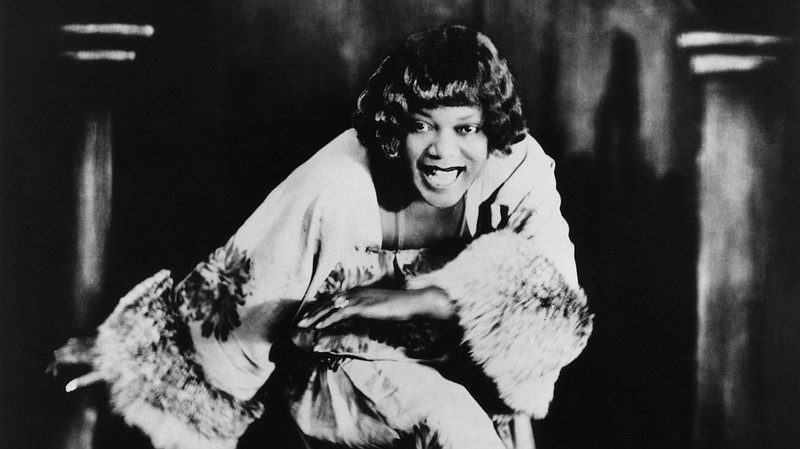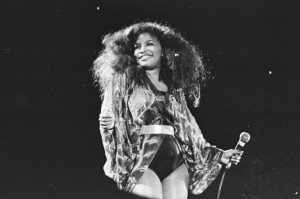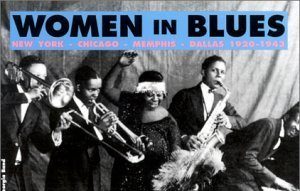Embracing a New Norm Through Blues
By: Demi Browder
Women in Blues
African American women set the new standard of expression through music as they stood up and embraced their independence, freedom, and sexual imagery in Blues. Blues emerged during the decades following the abolition of slavery allowing for the genre to give musical expression to new social and sexual realities encountered by African Americans as free women and men. Bessie Smith was a prominent figure in the blues scenes. She was known as the “Empress of the Blues,” due to her technical and personal performances that allowed her to become the highest paid black female artist during the era of blues. Bessie Smith wasn’t afraid to share her mind within her music. She sang specifically to and for black women, as she shared with the world struggles black women go through everyday that most of America wouldn’t even think about. Her ability to educate audiences on abuse, racism, and sexism was admirable during that time, because a lot of Black Americans were hesitant because they were concerned it would lead them to less success. Other Blues artists like Ma Rainey and Mamie Smith expressed the some of the same topics in their music allowing them to pave the way and inspire female artists after them.



Blues in Today
Although the blues scene has died down since Ms. Smith and Ms.Rainey was around, their impact still lives today. The confidence and space they established in the music industry has allowed for future women artists to start on a foundation themselves. The topics these women spoke about are topics we still hear in today’s music. Even though it is unfortunate black women still endure a lot of the trials and tribulations Bessie Smith sang on, the fight and power behind these words have grown. Artists today like Lauryn Hill, Jazmine Sullivan, and Alicia Keys incorporate jazz elements used by the women like the Empress to tell and share their opinions on the black community without an ounce of worry from anyone who might hear. If it weren’t for the women in blues who knows what topic of conversation, if any would be for women, black women specifically and their ignored impact on the society.
Works Cited
Davis, Angela. “Blues Legacies and Black Feminism.” The New York Times, The New York Times, 1998, archive.nytimes.com/www.nytimes.com/books/first/d/davis-blues.html.
Other Works About Blues

Women of the Blues
/*! elementor – v3.8.1 – 13-11-2022 */ .elementor-heading-title{padding:0;margin:0;line-height:1}.elementor-widget-heading .elementor-heading-title[class*=elementor-size-]>a{color:inherit;font-size:inherit;line-height:inherit}.elementor-widget-heading .elementor-heading-title.elementor-size-small{font-size:15px}.elementor-widget-heading .elementor-heading-title.elementor-size-medium{font-size:19px}.elementor-widget-heading .elementor-heading-title.elementor-size-large{font-size:29px}.elementor-widget-heading .elementor-heading-title.elementor-size-xl{font-size:39px}.elementor-widget-heading .elementor-heading-title.elementor-size-xxl{font-size:59px} Introduction The 1920’s was accompanied by a blues soundtrack that included
Mamie Smith: The Queen of Blues
Mamie Smith: The Queen of Blues Introduction In the 1860s, a new sound emerged. Evolving from Black work songs, blues has its roots in secular
Women of the Blues: Bessie Smith
Women of the Blues: Bessie Smith The Blues genre did not only include black men. Black Women significantly contributed to the sound of the blues.

Let’s Talk About The Blues
/*! elementor – v3.6.1 – 23-03-2022 */ .elementor-heading-title{padding:0;margin:0;line-height:1}.elementor-widget-heading .elementor-heading-title[class*=elementor-size-]>a{color:inherit;font-size:inherit;line-height:inherit}.elementor-widget-heading .elementor-heading-title.elementor-size-small{font-size:15px}.elementor-widget-heading .elementor-heading-title.elementor-size-medium{font-size:19px}.elementor-widget-heading .elementor-heading-title.elementor-size-large{font-size:29px}.elementor-widget-heading .elementor-heading-title.elementor-size-xl{font-size:39px}.elementor-widget-heading .elementor-heading-title.elementor-size-xxl{font-size:59px} Introduction to The Blues At the end of the 20th century
Ma Rainey and Blues
/*! elementor – v3.5.6 – 28-02-2022 */ .elementor-heading-title{padding:0;margin:0;line-height:1}.elementor-widget-heading .elementor-heading-title[class*=elementor-size-]>a{color:inherit;font-size:inherit;line-height:inherit}.elementor-widget-heading .elementor-heading-title.elementor-size-small{font-size:15px}.elementor-widget-heading .elementor-heading-title.elementor-size-medium{font-size:19px}.elementor-widget-heading .elementor-heading-title.elementor-size-large{font-size:29px}.elementor-widget-heading .elementor-heading-title.elementor-size-xl{font-size:39px}.elementor-widget-heading .elementor-heading-title.elementor-size-xxl{font-size:59px} The Mother of Blues Ma Rainey is known as the “Mother
The Blues Behind The Blues
By Nelly Ruach Quick Run Down The Blues, like many of the genres we have learned about in this class, have followed the pattern of
Other Works by Author

Gospel Through the Decades
All Aboard the Gospel Train By: Demi Browder For those like me who wasn’t too heavily experienced with gospel, hop on this train to take

All Hail the Queen… of Soul
Put Some Respect on Her Name: Aretha Franklin By: Demi Browder The Queen of Soul Aretha Franklin was born on March 15, 1942 in Memphis,
A Dedication to the Wheat Street Female Quartet
Significant in Silence: Wheat Street Female Quartet By: Demi Browder Who is Wheat Street? The Wheat Street Female Quartet is an all female group that
Pursuance: An Element of ‘A Love Supreme’
John Coltrane and ‘A Love Supreme’ Analysis By: Demi Browder John Coltrane & His Journey John Coltrane was an American Jazz saxophonist and composer born

Wha-a-t in the Tech-n-ooo
… Where Are the Women in Techno? By: Demi Browder Detroit Techno Techno music started to become known around the 1980s and early 1990s. Specifically,

Chaka Khan
Queen of Funk: Chaka Khan By: Demi Browder Yvette Marie Stevens Chaka Khan, known as the Queen of Funk was born on March 23, 1953


